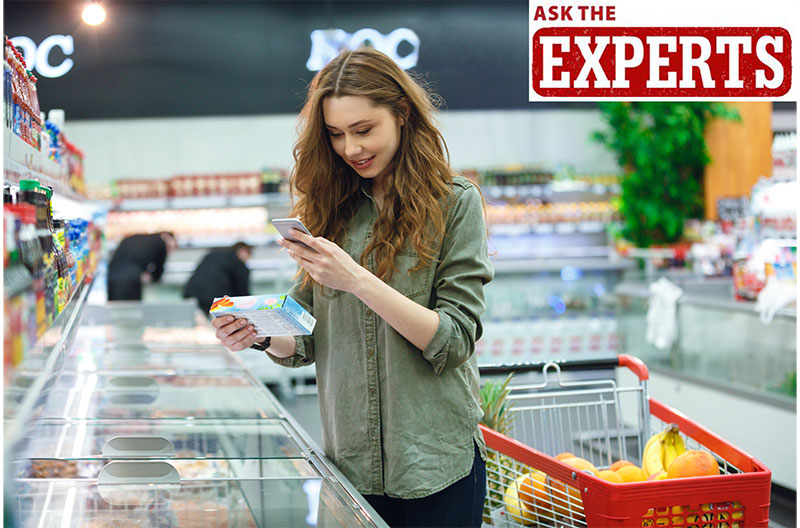Is A Unified Digital Experience The Key To Success For Food Retailers?

Q&A with Randy Crimmins, president at Relationshop.
Is a unified digital experience the key to success for food retailers? Relationshop discusses the importance of providing seamless, unified digital shopping experience that delivers convenience and value to each shopper.
How has the pandemic changed grocery retailers’ approach to their digital offering?
Of course, the pandemic has been the dominating factor in grocery and other retail verticals for the past two plus years. It accelerated the adoption of all things digital, and spurred this huge, almost desperate push to deploy online shopping. Now that we are, hopefully, on the backside of the pandemic, and “normal” is settling in, we see retailers taking a step back to assess where they are and what they need to optimize their overall digital presence.
Post-pandemic, we are seeing in-store shopping again on the rise, underscoring the importance of retailers considering how their digital offering supports all commerce. What tools do they need to engage digitally with their shoppers, manage and optimize their complete shopping experience? How do technology investments need to shift to better support the retailer’s digital presence, as well as their physical properties? And, importantly, how do these digital technologies facilitate a blended and somewhat fluid shopping environment of online and in-store?
These questions are common among retailers of all sizes as they evaluate their readiness for right now and what’s next. The reality is that supermarkets have no choice – consumers today have made it for them, and they expect a unified, seamless digital experience that delivers convenience and value. For food retailers, it’s never been more important to provide the kind of digital shopping experience that meets the needs of today’s consumer. If you don’t, there are any number of competitors that will.
Speaking of shopping, how does a unified digital experience improve the overall shopping experience?
As food consumers, we are all similar, but also different. We all shop, but we shop uniquely based on our individual needs and a myriad of other factors that constantly influence our behavior. As a digital experience technology provider to supermarkets, we built our platform to address this need. It’s what we like to refer to as “connected commerce,” and it enables the ability for the retailer to meet the shopper where they are and how they want to shop at any time.

It’s the new world of hybrid shopping – today in-store, tomorrow online. I may start an order on my desktop, but then finish on my app while running errands. And, while I’m at it, order a pizza for dinner and a custom cake and flowers for a weekend party. A unified digital platform is designed to seamlessly connect the shopper to all the ways they can shop the retailer’s complete offering.
Buying your groceries today is an omni-commerce and multi-device experience. At Relationshop, our platform is designed to make that experience easier and more convenient for the customer and more valuable to the retailer.
We hear so much about personalization these days. What does it really mean and how does a unified digital approach help retailers deliver more personalized experiences?
Everyone has a different perception of what personalization means. To us, it’s about how we make the shopping experience more convenient, more curated and more valuable to each individual. This can take many forms within the digital experience. It may be recommending items that I already buy, suggesting a new item that I might be interested in, or serving up the next best product when the one I want isn’t available. It could be delivering offers and promotions that are relevant to me based on my behavior, or delivering a contextual experience based on how I primarily shop, or the interests I’ve shared about myself and family.

We recently entered into an exciting new partnership with the University of Houston College of Technology to jointly establish a Retail AI Innovation Lab. This move underscores the need for continued emphasis and evolution of personalization in retail. And not just personalization of products and offers, but deeper, more connected personalization. As an example, Relationshop is helping its clients leverage the growing “food as medicine” trend. Consumers have prescribed conditions and non-prescribed, but desired, dietary and nutritional goals.
According to a recent study, 38 percent of millennials and nearly 50 percent of Gen Z households follow a specific dietary approach. If a retailer knows this about their customers and they know the nutritional attributes of a product, then we can bring the two together to make important food purchase choices more relevant than ever. For these shoppers, that’s a lot more valuable than 50 cents off green beans. We see this as one more way to help retailers further personalize the digital experience and connect more deeply with their customers.
Retailers need to look for ways to extend the application of personalization throughout the digital experience. Whether it’s recommended products, personalized offers, curated content, context-based commerce or suggesting products that fit my dietary profile, companies like Relationshop continue to advance the definition and application of ‘personalization’ within grocery retail.
Retail media networks seem to be gaining traction. How are retailers leveraging these applications and what is the opportunity for grocery?
Grocery is often viewed as somewhat of a laggard when it comes to maximizing digital opportunities, but this is another area where it is quickly catching up. Grocers have long been adept at monetizing in-store displays, shelf space and the printed weekly ad, of course. But as a rule, they do relatively little digital monetization. While these large media networks are helping level the playing field by giving regional grocery chains better access to national deals, this is still a CPG driven model with little retailer control. That doesn’t have to be the case.
A unified digital platform gives the retailer control over their entire digital footprint. Coupled with the ability to track and manage individual customer activity from digital impression to transaction, this represents a huge opportunity for grocers to monetize all aspects of their digital experience, as well as fully understand the shopper’s journey within it. For example, clients on Relationshop’s digital platform can present featured products, push sponsored promotional content, serve display ads and videos – all of which can be linked to curated, shoppable collections of products.
The retailer can even control the targeting levels to present content or promotions to all digital shoppers, localized to just those associated to specific stores, or personalized to individual customers. We are seeing tremendous interest from retailers in this ability to control and monetize their digital experience based on their go-to market strategies and goals. It’s a win-win for retailers and brands alike.
So, this all sounds great, but how does a retailer start down the path toward creating a unified digital experience for their customers? What are the key requirements?
What we tell retailers is to assess where they are and where they want to be. There are foundational and operational considerations. Look at all the different ways in which they engage with their customers. What kind of customer data do they capture and maintain? What type of POS and other systems do they utilize? Do they have a loyalty program, e-commerce, digital coupons, are they integrated? Are there third-party applications to consider for integration? Ultimately, they have an experienced technology partner capable of supporting the kind of robust, unified, omni-channel, omni-commerce digital experience they want to provide their customers.
We like to think of it in terms of “UDP.” Unified digital platform built on a unified data platform. As in so many other areas of the business, data is foundational. However, in this case, to realize the full potential of your brand’s digital experience, it’s mission critical. Clean, properly attributed product data, customer loyalty and transactional data, and user level digital activity data provide the opportunity to understand your customers holistically – from digital impression to online or in-store transaction and all points of interaction in between.

No different than their physical properties, a retailer’s digital properties need to be thought of in terms of customer service, product merchandising, endcaps, displays, and other promotional opportunities. It’s no longer enough to have a branded website or mobile app that solely provides information or is strictly for online shopping. A retailer’s website and mobile app should serve to engage shoppers, driving sales and enhance loyalty. Because a digitally activated shopper matters most to the business – spending on average more than $400 annually than a similar, non-digital shopper. So having a unified data platform is key to having a unified digital experience.
Wrapping up, what are other key trends you are seeing impacting the grocery digital experience?
Mobile matters. Mobile growth is nothing new, but the pace of it over the last couple of years is astounding and has significant implications for supermarkets and how they optimize their digital presence. Among grocery brands we work with, we are consistently seeing as high as 85 percent of shoppers digitally engaging on a mobile device, as opposed to desktop. So, if you don’t have a strong, feature rich mobile shopping experience for your customers, you might as well be telling them to take their business to your competition.
Reimagine the (digital) circular. While it has been written off for years, the printed circular has just kept hanging around. Now, as supermarkets emerge from the pandemic, we are seeing more and more discontinuing the printed ad for good and going to digital only. We expect this to only accelerate with more retailers adopting a digital only strategy. The digital circular, which, historically, hasn’t been much more than a pdf of the print ad, is being reimagined by innovative grocers. Retailers are making it personalized, shoppable, including loadable coupons and media rich content. And with consumers feeling the sting of inflation, more customers will be seeking out values and savings, so there is no better time than now to take your digital circular to the next level.
Loyalty 2.0. Loyalty programs have become somewhat stagnant over the last five years with membership growth and active rates declining. However, we’re seeing a renaissance of sorts, with many retailers launching new or updated programs built around the digital experience, gamification, and the utility of the mobile app. We are seeing supermarket loyalty programs that are less static and more dynamic with opt-in reward challenges, in and out promotions, gamification, personalized reward offerings and mobile-centric features. Loyalty is evolving from a structured program to more of a holistic digital framework for engaging, motivating, and rewarding loyal customers – a key part of a unified digital experience.
The grocery sector continues is a hyper-competitive space, with pressure on many fronts, rapidly changing consumer behaviors and uncertainty about what might be next. However, those retailers that have a strong data and digital footing, and are committed to providing their customers with a seamless, unified digital experience that consistently delivers convenience and value will have the edge over the competition and a clearer path to long-term success. Make sure you are ready for what’s now and next.
